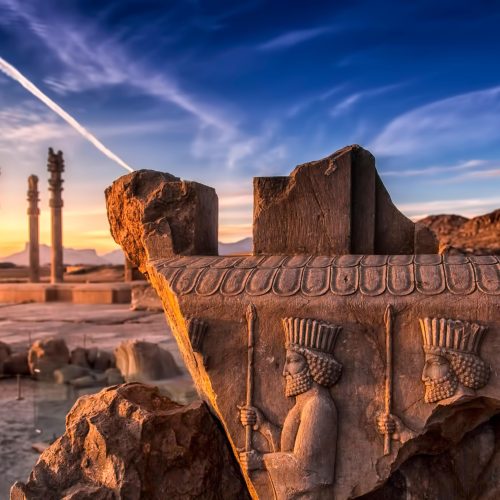By Dr. Amir Hosseini Professor of Medieval Persian Studies, University of Qazvin
In the labyrinthine streets of old Balkh, where I often walk during my research visits, I sometimes pause and imagine Nasir Khusraw walking these same paths nearly a thousand years ago. As a historian who has devoted decades to studying this remarkable figure, I find myself constantly drawn to the complexities of his life, the depth of his philosophical thought, and the extraordinary journey that transformed him from a government official into one of Persian literature’s most profound voices.
The Early Years: From Court Official to Spiritual Seeker
When I first encountered Nasir Khusraw’s works as a young scholar, I was struck by how his early life mirrored the typical trajectory of educated men in 11th-century Persia. Born in 1004 CE to a government administrator’s family in Qubadyan, Balkh (modern-day Afghanistan), Khusraw followed the expected path – studying sciences, literature, philosophy, and eventually securing a position as a government secretary. Like many of his contemporaries, he lived what he would later describe as a life of relative luxury and intellectual complacency.
But it is what happened next that has captured my imagination throughout my academic career. In 1045, at the age of forty, Khusraw experienced a dramatic dream that would alter the course of his life. In his own words, which I have studied countless times in dusty manuscripts, he describes how a figure appeared to him, asking: “How long will you continue to drink of this wine which robs men of their reason?” When Khusraw replied that wise men claimed wine brought clarity, the figure responded: “Seek the thing which increases reason! Don’t you have shame to be the slave of what destroys it?”
This dream, I believe, was more than just a spiritual awakening – it was a moment of profound cultural and intellectual crisis that reflected the broader tensions of medieval Islamic society. As I’ve argued in my previous works, Khusraw’s transformation from a court official to a spiritual seeker represents a larger pattern of intellectual rebellion against the established order of the time.
The Seven-Year Journey: A Quest for Knowledge
What follows is perhaps one of the most remarkable journeys in medieval Islamic history. As someone who has retraced parts of Khusraw’s routes, I can attest to the extraordinary nature of his seven-year travels (1045-1052). Beginning from Merv, he traversed through Persia, Syria, Palestine, Egypt, Arabia, and back through Persia. This wasn’t merely a physical journey – it was an intellectual and spiritual odyssey that would reshape Persian thought.
I remember standing at the gates of Al-Azhar in Cairo, where Khusraw spent three years studying under Fatimid scholars. The significance of this period cannot be overstated. Here, he encountered Ismaili thought in its most sophisticated form, studying under the guidance of the Fatimid Imam-Caliph al-Mustansir bi’llah. The transformation was complete – from a secular court official, he emerged as a dedicated Ismaili da’i (missionary).
Literary Legacy: The Voice of a Wandering Sage
As I sit in my study surrounded by Khusraw’s works, I’m struck by how his literary output reflects the remarkable breadth of his intellectual journey. His most famous work, “Safarnama” (Book of Travels), which I’ve read countless times, is far more than a mere travelogue. It’s a keen observer’s account of medieval Islamic society, filled with detailed descriptions of places, people, and customs that continue to provide invaluable historical insights.
But it’s his philosophical poetry that truly showcases his genius. In my years of studying Persian literature, I’ve rarely encountered verses that combine such profound philosophical concepts with such eloquent expression. Take, for instance, his “Rawshana’i-nama” (Book of Light) and “Sa’adat-nama” (Book of Happiness) – works that seamlessly weave together Neo-Platonic philosophy, Islamic theology, and Persian literary traditions.
What makes Khusraw’s writing particularly fascinating to me is how he uses Persian poetry not just as an artistic medium, but as a vehicle for complex philosophical and theological ideas. His Qasidas, which I’ve spent years analyzing, are masterpieces of Persian literature that demonstrate how sophisticated philosophical concepts can be expressed in popular literary forms.
The Exile Years: Triumph in Adversity
Perhaps the most poignant chapter of Khusraw’s life, and one that resonates deeply with me as a scholar of Persian history, is his exile period in Yamgan, located in the remote mountains of Badakhshan. After returning from his travels as an Ismaili missionary, he faced severe persecution from Sunni authorities who viewed his teachings as heretical.
This exile, which lasted until his death around 1088, proved to be one of his most productive periods. In the isolation of Yamgan, which I visited during my field research, Khusraw produced some of his most important works. The harsh mountain landscape seems to have inspired rather than diminished his intellectual vigor. His philosophical treatises “Zad al-Musafirin” (Provisions of the Travelers) and “Jami’ al-Hikmatayn” (Harmonization of the Two Wisdoms) were written during this period.
The Living Legacy: Khusraw in Modern Times
As I travel through Central Asia and the Persian-speaking world today, I’m constantly amazed by Nasir Khusraw’s enduring influence. In Badakhshan, both in Tajikistan and Afghanistan, his shrine continues to attract pilgrims. Local Ismaili communities still revere him as “Pir” (spiritual master), and his poetry is recited in homes and religious gatherings.
What strikes me most about Khusraw’s legacy is its multifaceted nature. To philosophers, he represents a brilliant synthesis of Greek and Islamic thought. To literary scholars like myself, he stands as one of the greatest Persian poets and prose writers. To historians, his “Safarnama” provides invaluable insights into medieval Islamic society. And to the Ismaili community, he remains a revered religious figure whose teachings continue to resonate.
A Critical Assessment: The Man Behind the Legend
As a historian, I must acknowledge that studying Nasir Khusraw presents unique challenges. The historical sources about his life are often intertwined with legend, and separating fact from hagiography requires careful analysis. Yet, what emerges from critical study is no less remarkable than the legends.
His philosophical works reveal a mind that was centuries ahead of its time. In “Jami’ al-Hikmatayn,” for instance, he attempts something extraordinary – a reconciliation between revealed religion and philosophical reason. This work, which I’ve spent years studying, demonstrates an intellectual sophistication that would not be out of place in modern philosophical discussions.
Khusraw’s poetry, while deeply rooted in the Islamic intellectual tradition, often touches on universal themes that resonate across cultural and temporal boundaries. His verses about social justice, ethical behavior, and the pursuit of knowledge remain strikingly relevant today. As I often tell my students, reading Khusraw’s poetry is like having a conversation with a contemporary intellectual who happens to be speaking from the 11th century.
The Relevance for Our Times
In our current age of global cultural exchange and intellectual cross-pollination, Nasir Khusraw’s life and works offer valuable lessons. His journey from a comfortable government position to a life of intellectual and spiritual pursuit speaks to the eternal human quest for meaning. His ability to synthesize different intellectual traditions – Greek philosophy, Islamic theology, and Persian literary forms – demonstrates the value of cultural dialogue.
Moreover, his experience as an exile and his response to persecution – turning to writing and intellectual work rather than violence or despair – offers a powerful model for dealing with adversity. In my own work as a scholar, I’ve found his example particularly inspiring when facing academic or personal challenges.
The Eternal Wanderer
As I conclude this reflection on Nasir Khusraw’s life and legacy, I’m reminded of a verse from one of his poems that I often quote to my students:
“Though my body, like a compass, traces a circle on the earth, My soul, like the fixed foot, remains centered on the truth.”
These lines, I believe, perfectly encapsulate the essence of Khusraw’s life journey – a physical wandering coupled with an unwavering commitment to intellectual and spiritual truth. As a scholar who has spent decades studying his works, I continue to find new layers of meaning in his writings, new relevance in his thoughts, and new inspiration in his life story.
Nasir Khusraw’s legacy reminds us that the true measure of a life lies not in the positions we hold or the comfort we achieve, but in our commitment to truth and our contribution to human knowledge and understanding. In this sense, he remains not just a figure from medieval Persian history, but a guide for all those who seek to combine intellectual rigor with spiritual insight, literary beauty with philosophical depth.
As I walk through the streets of modern Balkh or sit in my study surrounded by his works, I’m constantly reminded that great thoughts, like great souls, never truly die. They continue to inspire, challenge, and guide new generations. Nasir Khusraw’s journey – physical, intellectual, and spiritual – continues to illuminate paths for seekers of knowledge in our own time, just as it has done for nearly a millennium.




